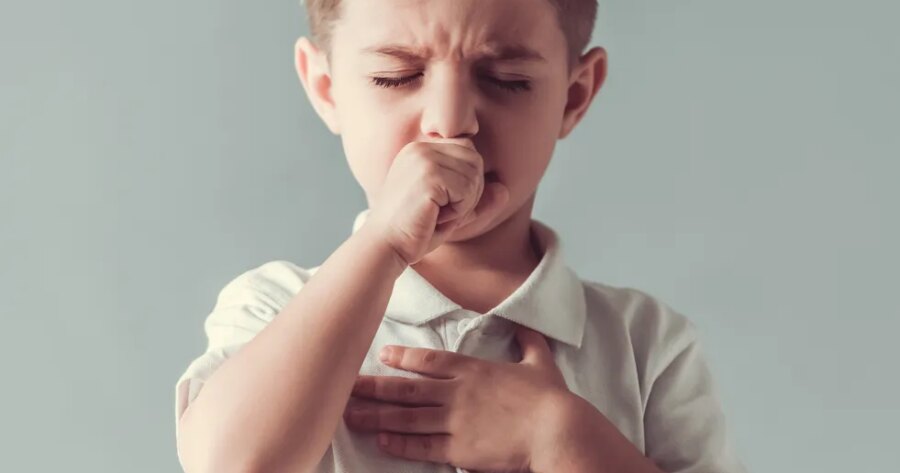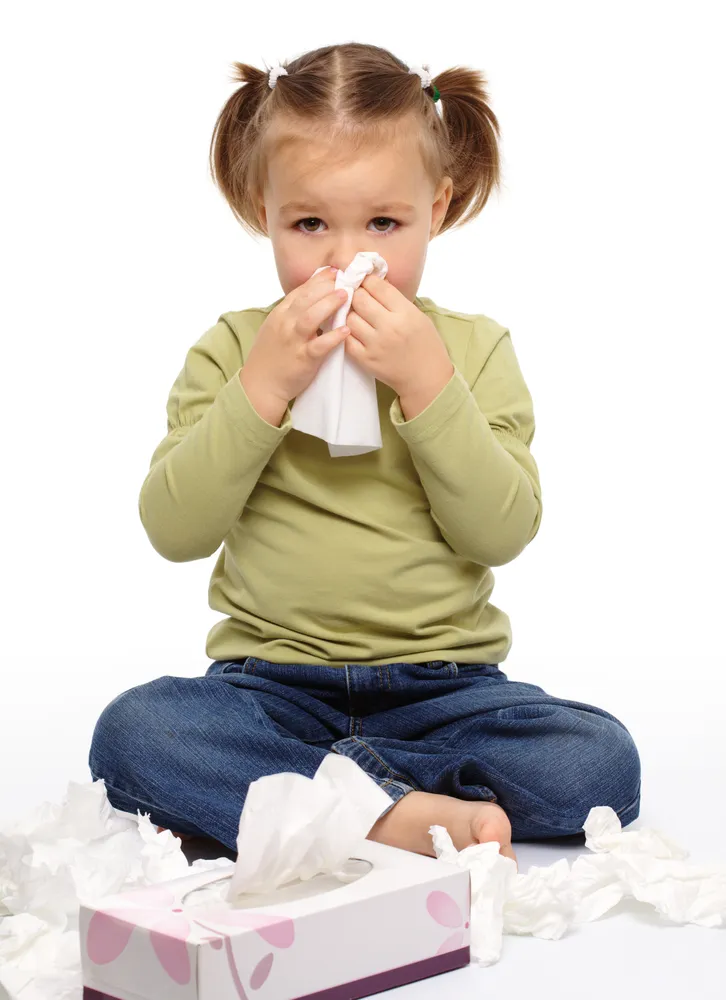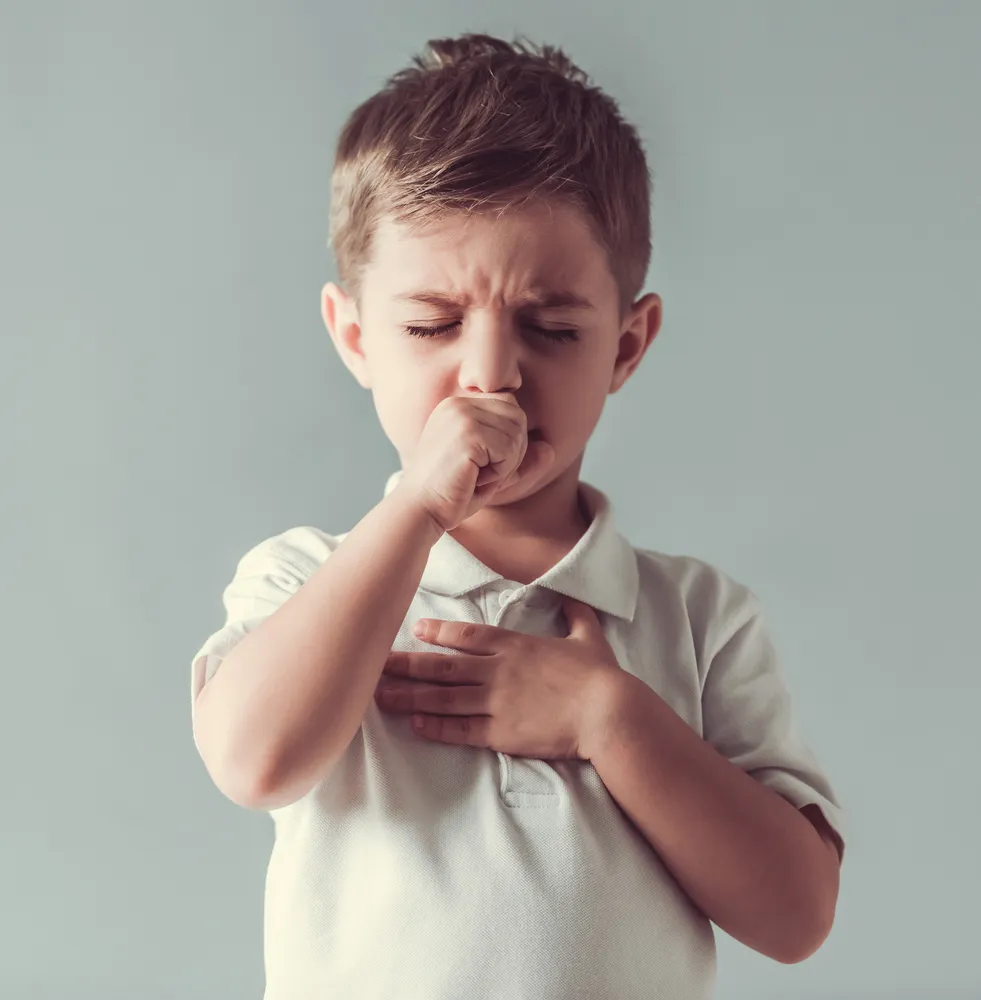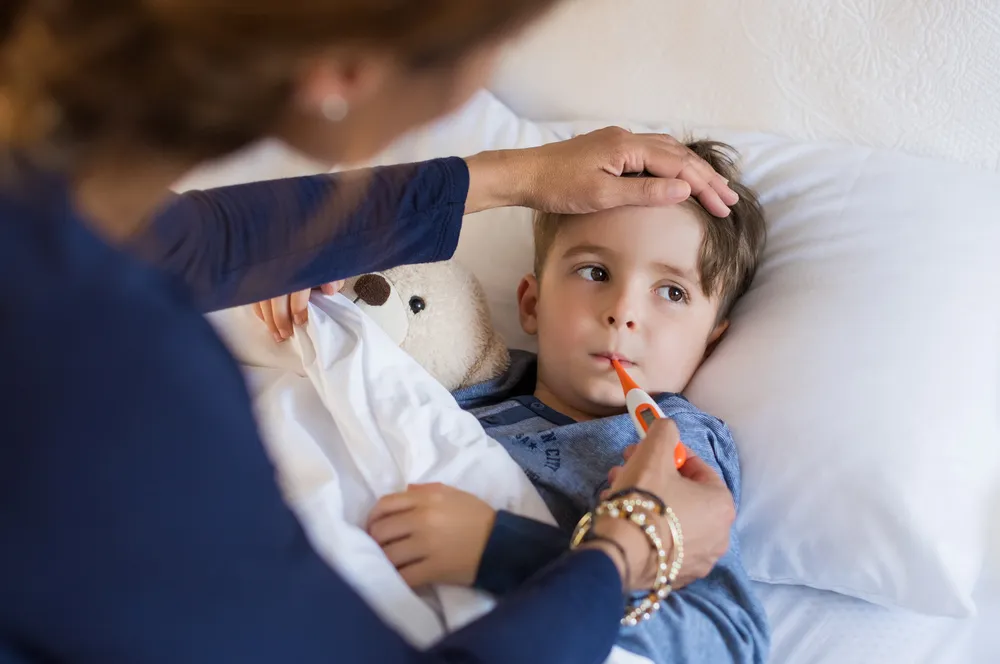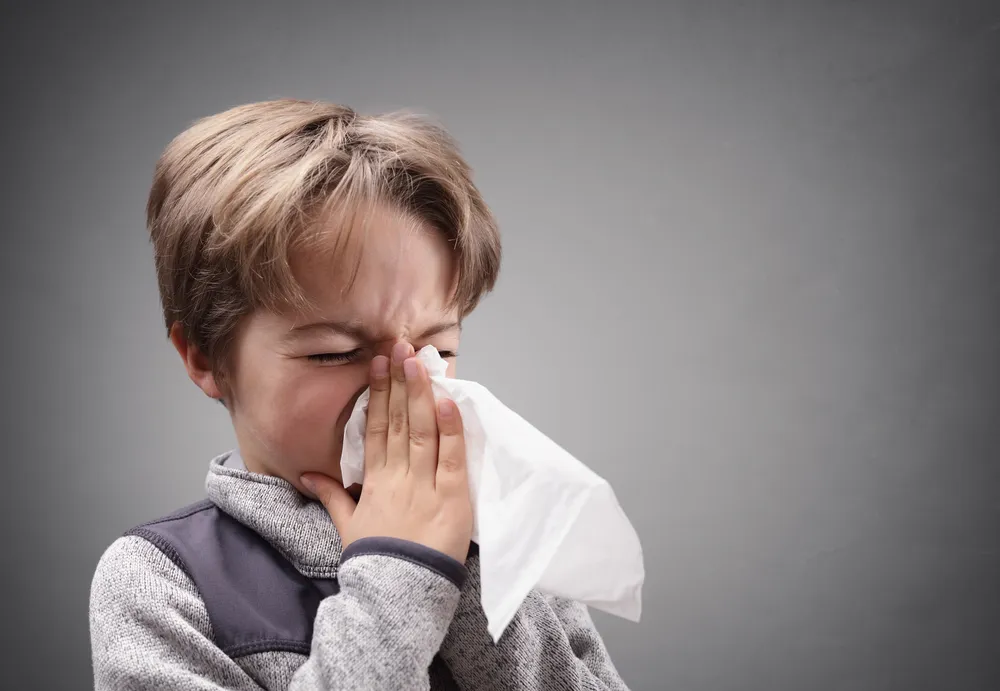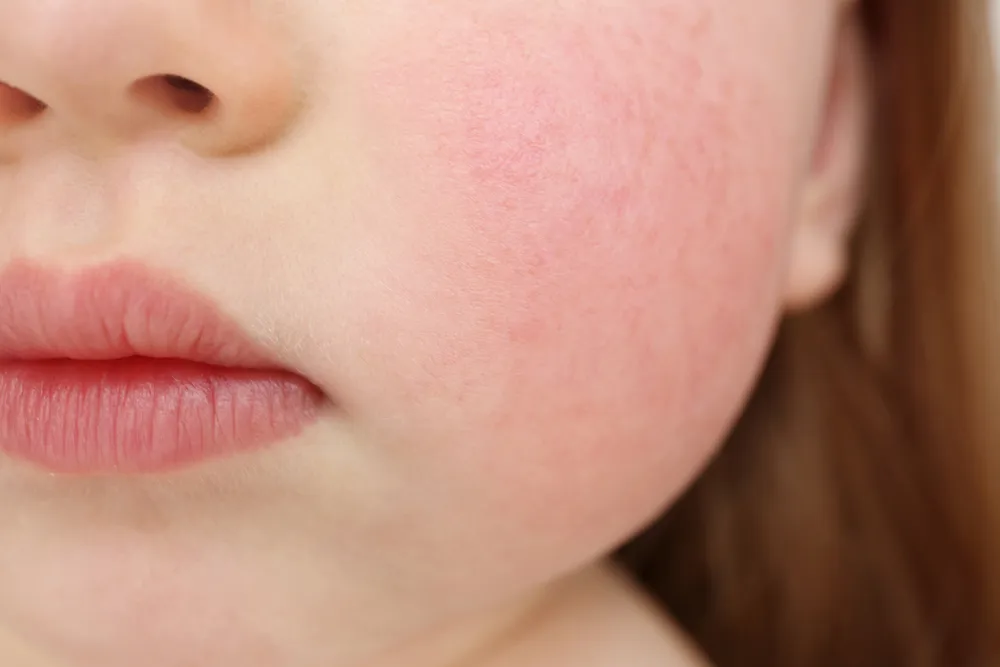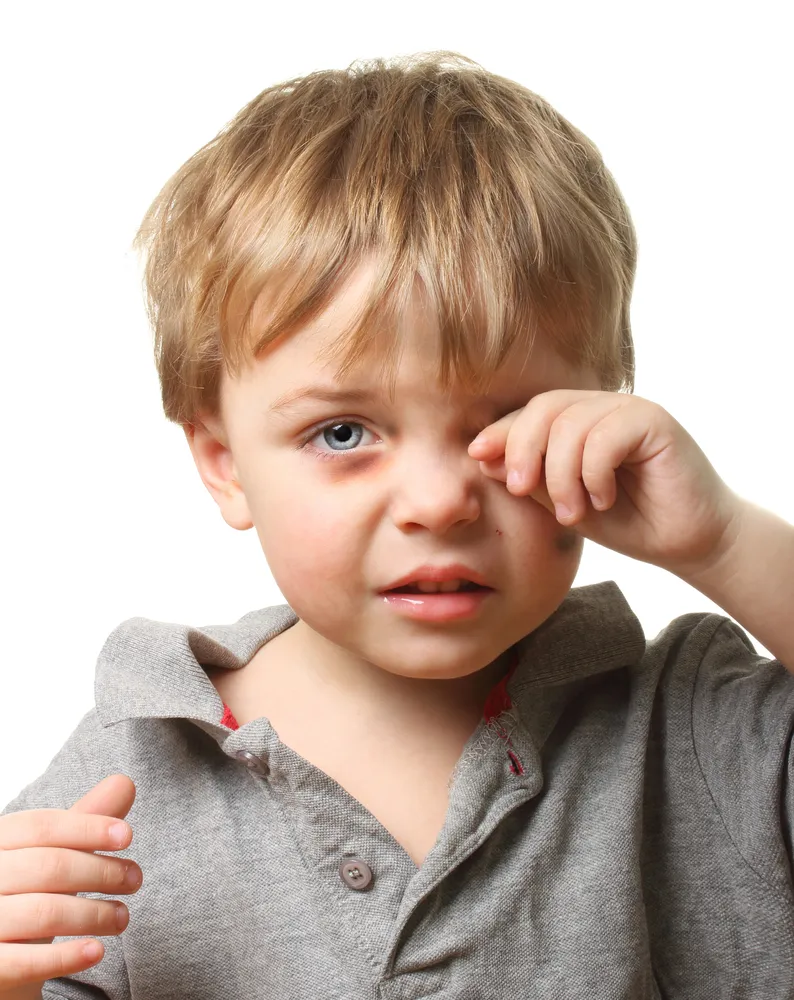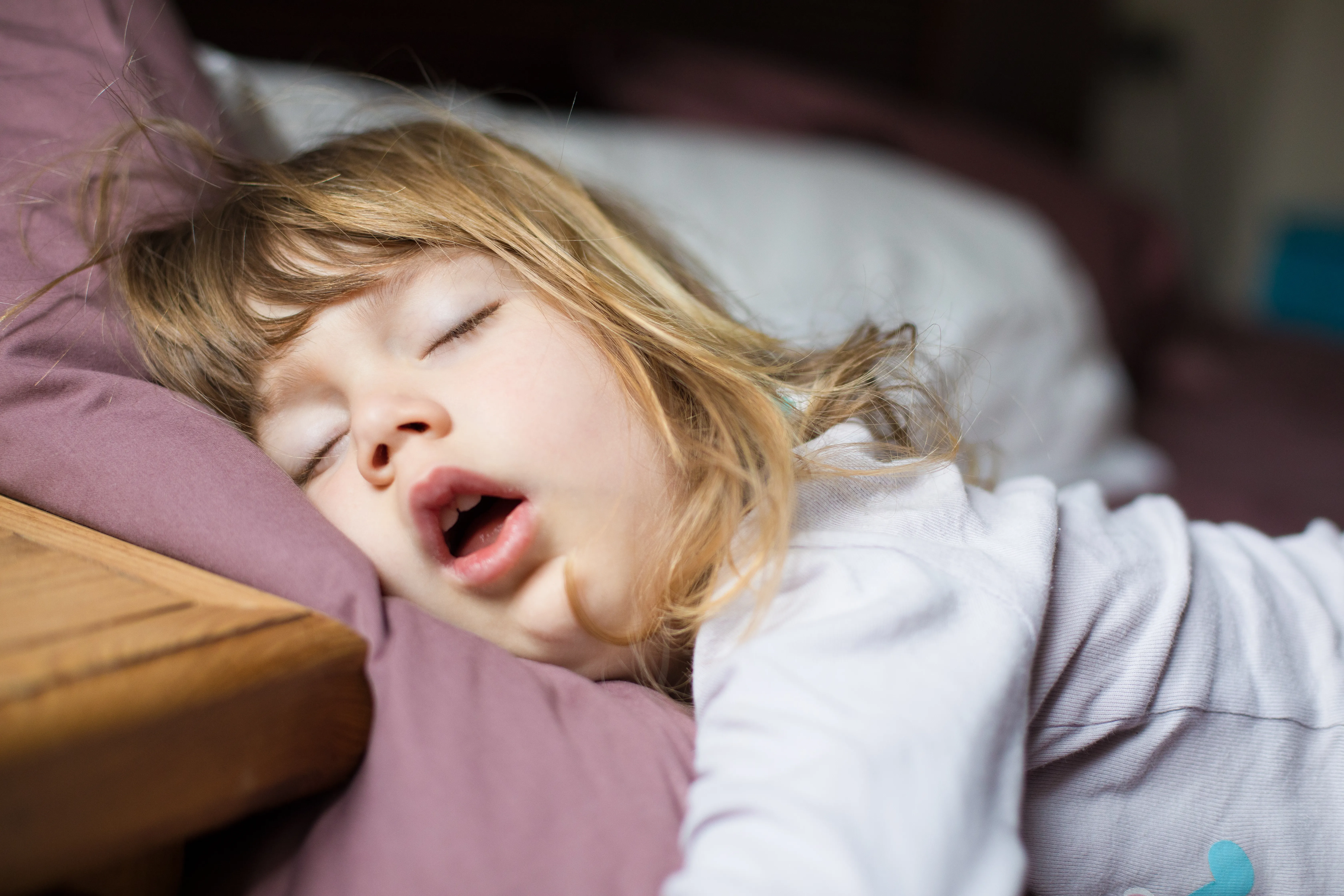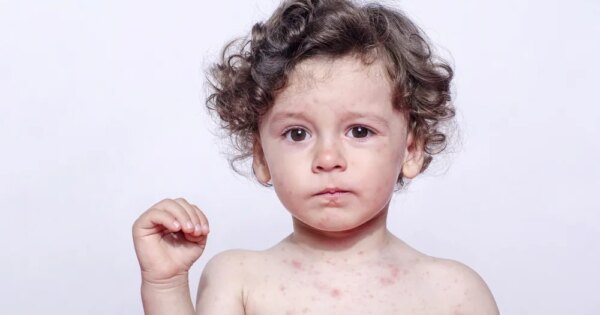Whooping cough (or Pertussis, the medical term) is caused by a bacterial infection of the respiratory system. Early symptoms mimic the common cold, but severe coughing spells and raspy breathing that makes a “whooping” sound is the most tell tale symptom. Whooping cough was once responsible for the deaths of approximately 10,000 children each year. Luckily, today a vaccine is available and children can be immunized starting at 2 months of age and continue until the child is about 5 or 6 years old. However, older children and teens can be at risk if their immunizations fade. Here are 8 signs that your child may have whooping cough…
8. Cold-Like Symptoms
The earliest sign of whooping cough begins approximately 10 days following contamination with typical cold-like symptoms—including sneezing, watery eyes, fatigue, muscle stiffness, and loss of appetite. Your child could experience other cold symptoms, like a mild fever and mild cough as well. The thick mucus that develops from whooping cough can make it difficult to eat and drink, so your child may seem uninterested in meal time. But although it may seem like a side effect of a cold, when your child doesn’t eat or drink anything it can actually be a sign of whooping cough.
Because many of the signs of whooping cough mimic those of the common cold, it can be easy to pass it off as nothing serious and let it run its course. Adults may also get whooping cough and it’s even more common to assume it’s a cold because their reaction to it may not present the same symptoms as a child’s would.
7. Severe Cough
In about 10 to 14 days, the contaminated child will develop a more severe cough with a tell tale “whooping” sound, and the coughing fits can last for longer than a minute. The sound follows each cough with each deep intake of breath following a coughing episode. Whooping cough is highly contagious and the accompanying cough is extremely serious – and dangerous. With how much and how often the coughing can occur, it can spread easily to other children and adults around them.
Whooping cough can be so severe it causes the child to throw up because they were coughing so hard, or burst blood vessels in their eyes. Babies that have the cough will typically release the whooping sound as they gasp for breath and try to regulate their breathing, but young babies might not display this symptom. Newborns and young babies might not even cough – they may gag or stop breathing instead, a scary possibility that is discussed further in this article.
6. Fever
A mild fever typically develops along with the other symptoms of whooping cough during the first few weeks of infection. The low fever usually occurs when other flu-like symptoms are present, and most parents would think their child had a cold. At this early time when symptoms are mild, the infected patient is the most contagious. When it comes to fevers caused by whopping cough, they aren’t likely to be more than mild – when the cough worsens, the fever typically doesn’t. The fever shouldn’t spike but if it does, you should seek medical attention.
The amount of whooping cough cases are much lower than they were because there is a vaccination to prevent children and adults from catching the respiratory virus. In fact, in a lot of cases children contract the virus before they’ve been able to be given the full vaccination, which can’t be completed until they’re almost 6 years old. So it’s important you and the rest of your family is vaccinated because while it might not make you sick, it’s highly contagious and get make an unprotected child sick.
5. Congestion
Along with a stubborn, painful cough, whooping cough causes large amounts of clear, thick and sticky phlegm in the chest and nostrils. If a baby or infant swallows it, or it becomes too congested, vomiting or choking can occur in efforts to clear the airways. The sinus congestion usually begins within the first two weeks of getting the virus. That said, in these early stages a child could display both symptoms of congestion and a runny nose.
As whooping cough develops and moves past the first few weeks of mild symptoms, the danger to your child increases. If your child has whooping cough, given that it’s highly contagious, you should not bring them to daycare or to interact with other children who are susceptible. It’s also important to note that it’s especially important for pregnant women to get the vaccination because they could infect their unborn baby if they aren’t protected.
4. Flushed Complexion
Bouts of sudden, severe coughing with whooping cough can cause flushed cheeks from the inconsistent ability to breathe properly and the tensing of the body. It’s also common to see a complexion that’s pale or bluish when they’re coughing due to the lack of oxygen and congestion. With whooping cough, you could even see red marks that look like dots on your child’s face. These spots are from blood vessels bursting from the force of their cough.
Flushed cheeks and especially burst blood vessels can be a sign your child is extremely sick from whooping cough, and you should keep a close eye on all of the symptoms so you know when you your child should see a doctor. If your child has trouble breathing, you should do a follow up with your doctor, or in cases of emergency, bring your child straight to the hospital or call an ambulance.
3. Watery Eyes
The respiratory infection that causes whooping cough often results in severe nasal as well as chest congestion, accompanied by sneezing, and red, irritated, and watery eyes. And sometimes children can cough so hard and so often that you’ll see red spots on one or both eyes from burst blood vessels. Watery eyes on their own aren’t necessarily a severe symptom, but the red spots from blood vessels bursting can be a sign that the coughing fits are extremely severe.
Whooping cough is really hard on children, both physically and emotionally. Young children can be irritated and cry a lot since they don’t understand what’s wrong, while older children can be hard to keep under control and don’t understand why they can’t go and play. This stems from the fact that a lot of children who have whooping cough feel completely fine in between coughing fits. But with how contagious whooping cough is, you can’t allow them to go to daycare or play with other children until it isn’t considered contagious any more.
2. Exhaustion
It’s very common for babies and small children to become physically exhausted from the effort it takes to cough. And they’re already likely to be tired from dealing with the first few weeks of flu-like symptoms. A round of whooping coughs can be so physically demanding that a sick child is fully drained of energy following a coughing fit. Then, depending on how often they’re coughing they won’t get much of a break to build up energy in between. As adults, we know how hard it is to deal with a respiratory infection that keeps us coughing all day. But children with whooping cough have to endure much more severe coughing that can stick around for a couple months.
What makes this even more difficult to handle is that the coughing will often keep your child awake at night, wake him or her up throughout the night, or prevent them from getting their much-needed naptime if they’re still used to napping. The broken sleep schedule just adds on even more exhaustion.
1. Apnea
One of the most frightening symptoms of whooping cough is apnea, where breathing stops for short and long periods of time during coughing bouts, but returns to normal afterwards. This can be particularly scary with a baby’s coughing spell, and unfortunately, it most commonly occurs in infants. According to the Centers for Disease Control and Prevention, whooping cough is most dangerous in babies, and there’s about a 50% chance that children under 1 year old will need require hospitalization for a portion of the virus. The CDC also highlights that children who have had vaccination have a lower chance of experiencing apnea, discoloration on the face, and vomiting from coughing so hard.
Although it is hard to diagnose whooping cough in the early stages, the earlier you diagnose it the better. There are some antibiotics that may help lessen the severity of the virus and its symptoms, as well as stop it from being contagious much earlier than the standard few weeks.
